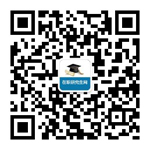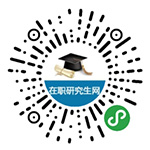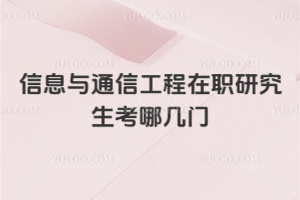- 微信公眾號

政策解讀
- 微信小程序

快速擇校

政策解讀

快速擇校
Students who want to enter the University of Montreal’s Athletic Complex need more than just a conventional ID card----their identities must be proved genuine by an electronic hand scanner. In some California housing estates, a key alone is insufficient to get someone in the door;his or her voiceprint must also be verified(確認(rèn)). And soon customers at some Japanese banks will have to present their faces for scanning before they can enter the building and withdraw their moneys.
All of these are applications of biometrics, a fast-growing technology that involves the use of physical or biological characteristic to identify individuals. In use for more than a decade at some high security government institutions in the United States and Canada, biometrics is rapidly popping up in the everyday world.
Biometric security systems operate by storing a digitized record of some unique human feature. When a user wishes to enter or use the facility, the system scans the person’s corresponding characteristics and attempts to match them against those on record. Systems using fingerprints, hands, voices, eyes, and faces are already on the market. Others using typing patterns and even body smells are in various stages of development.
Fingerprints scanners are currently the most widely used type of biometric application, thanks to their growing use over the last 20 years by law-enforcement agencies. Sixteen American states now use biometric fingerprint verification systems to check that people claiming welfare payments are genuine. Politicians in Toronto have voted to do the same, with a testing project beginning next year.
Not surprisingly, biometrics raises difficult questions about privacy and the potential for abuse. Some worry that governments and industry will be tempted to use the technology to monitor individual behavior. “If someone used your fingerprints to match your health-insurance records with credit-card record showing that you regularly bought lots of cigarettes and fatty foods,” says one policy analyst, “you would see your insurance payments go through the roof.” In Toronto, critics of the welfare fingerprint plan complained that it would force people to submit to a procedure widely identified with criminals.
Nevertheless, support for biometrics is growing in Toronto as it is in many other communities. In an increasingly crowded and complicated world, biometrics may well be a technology whose time has come.
1.According to the author, biometric technology is ______
A.in the stage of theoretical study
B.widely used in the world
C.a(chǎn)bout to be out of date
D.developing rapidly
2.What is one of the advantages of biometric technology?
A.It better protects people’s privacy.
B.It helps people follow a healthy life style.
C.It is cheaper than traditional methods.
D.It identifies people more accurately.
3.The author used the health insurance case mainly to ______
A.illustrate the use of the technology
B.give suggestions on buying insurance
C.draw attention to the problem of the technology
D.emphasize the importance of healthy diet
4.In which of the following situations is biometric technology NOT used?
A.Computers are switched on by a voice order.
B.Doctors diagnose disease through patients’ voice.
C.Museum doors are controlled by palm scanner.
D.The police identify criminals through fingerprints.
5.Which word would you use to describe the author’s tone in this passage?
A.Supportive
B.Objective
C.Critical
D.Indifferent
答案及解析:
1. D。細(xì)節(jié)題。答案在第二段All of these are applications of biometrics, a fast-growing technology that….B項不對,第三段中提到指紋掃描是目前應(yīng)用最廣泛的一種生物技術(shù),與B項內(nèi)容不符。A項是出于理論研究階段,C項是即將過時,都不對。
2. D。細(xì)解題。通過對第二段的分析可知,生物技術(shù)的一個優(yōu)點就是它的準(zhǔn)確性。
3. C。例證題。本文通過醫(yī)療保險這一例子說明了生物技術(shù)存在的問題。
4. B。細(xì)節(jié)題。答案在第三段Systems using fingerprints, hands, voices, eyes, and faces are already on the market。A、C、D能夠很容易被排除,B項醫(yī)生通過病人的聲音來診斷疾病,和文中提到的voices并不是一回事。
5. A。最后一段提到盡管生物技術(shù)應(yīng)用還存在一些問題,但支持它的人越來越多,在這個越來越擁擠,越來越復(fù)雜的世界里,生物技術(shù)的時代到來了。可見作者對此的態(tài)度是支持的。
特別聲明:①凡本網(wǎng)注明稿件來源為"原創(chuàng)"的,轉(zhuǎn)載必須注明"稿件來源:育路網(wǎng)",違者將依法追究責(zé)任;
②部分稿件來源于網(wǎng)絡(luò),如有侵權(quán),請聯(lián)系我們溝通解決。

天津雙證在職研究生院校有河北工業(yè)大學(xué)、天津大學(xué)等。雙證指非全日制研究生,需參加全國統(tǒng)考,每年10月報名,過國家線有機(jī)會錄取,畢業(yè)獲學(xué)歷證與學(xué)位證,學(xué)信網(wǎng)可查,認(rèn)...

金融學(xué)在職研究生報考,非全日制方式要求本科畢業(yè)或?qū)?飘厴I(yè)滿2年,初試與全日制考試科目相同;同等學(xué)力申碩方式,大專及以上學(xué)歷可報名課程學(xué)習(xí),本科有學(xué)位滿3年可申碩...

北京在職研究生錄取分?jǐn)?shù)線迎來新變化,高校招生政策調(diào)整直接影響錄取機(jī)制。新政策聚焦分?jǐn)?shù)線設(shè)定標(biāo)準(zhǔn)、專業(yè)招生比例優(yōu)化等核心要素,旨在提升教育質(zhì)量。這些變動對在職考生...

在職醫(yī)生報考醫(yī)學(xué)在職研究生常面臨工作與學(xué)習(xí)平衡的挑戰(zhàn)。本文提供全面攻略,詳細(xì)解析報名流程、資格審核和考試準(zhǔn)備策略,包括高效復(fù)習(xí)方法和時間管理技巧。注意事項部分強...

信息與通信工程在職研究生若通過同等學(xué)力申碩方式,入學(xué)無需考試。申碩階段考試一般考外語(如英語、法語等)和專業(yè)課(涵蓋信號與系統(tǒng)、通信原理等)。考試通過標(biāo)準(zhǔn)為及格...

電氣工程在職研究生若通過同等學(xué)力申碩方式,學(xué)費一年在1.4萬-1.79萬元左右(學(xué)制多為2年)。如華北電力大學(xué)學(xué)費3萬元,平均一年1.5萬元;河北工業(yè)大學(xué)學(xué)費2...
評論0
“無需登錄,可直接評論...”